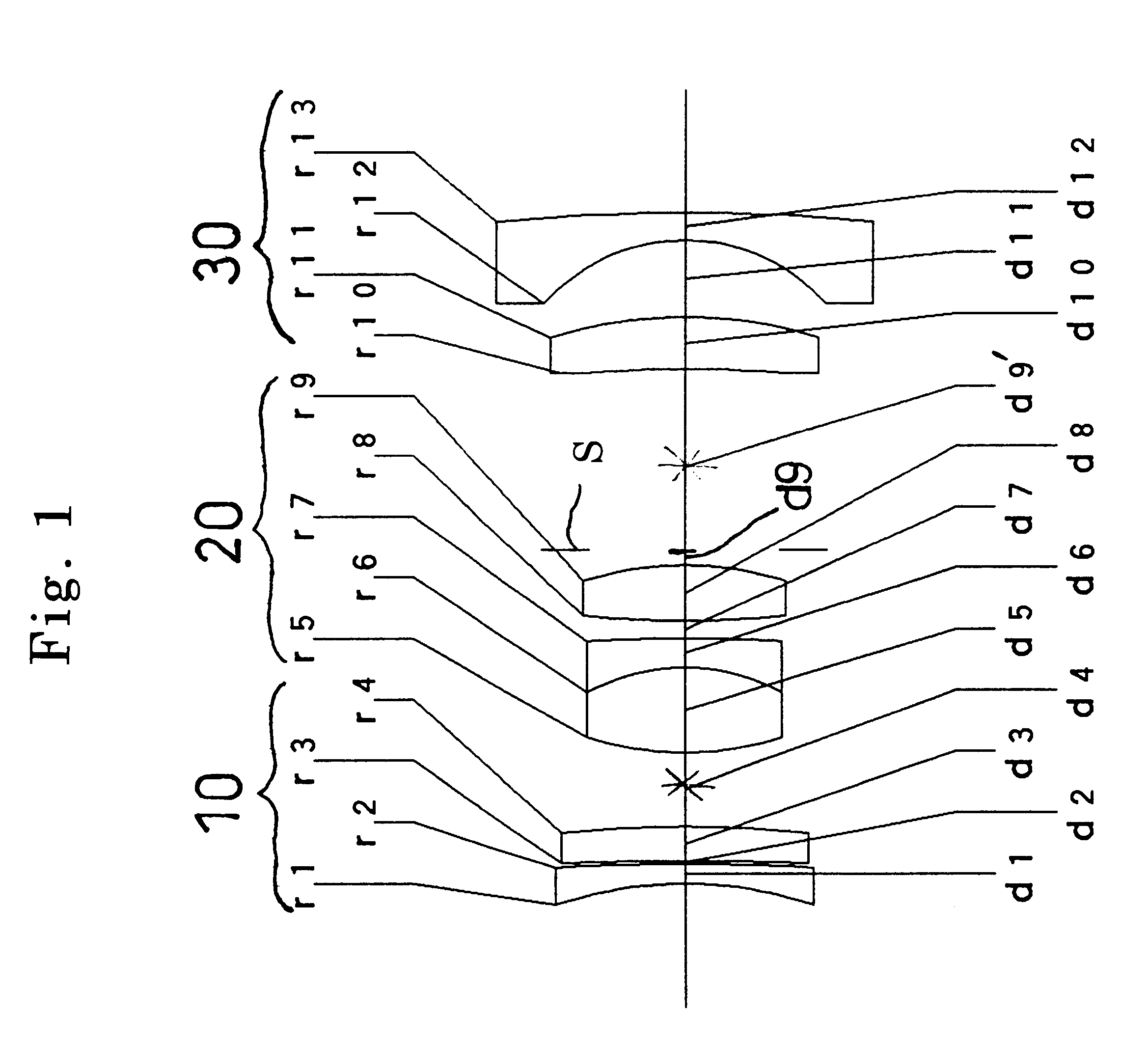Zoom lens system and a focusing method thereof
a zoom lens and lens group technology, applied in the field of zoom lens system, can solve the problems of inability to miniaturize the three-lens zoom lens system, the sensitivity of the focusing lens group becomes too high, and it is difficult to suitably correct aberrations from infinity to the closest photographing position
- Summary
- Abstract
- Description
- Claims
- Application Information
AI Technical Summary
Benefits of technology
Problems solved by technology
Method used
Image
Examples
embodiment 2
FIGS. 8 through 14 show the second embodiment of the zoom lens system. FIG. 8 is a lens arrangement of the second embodiment. FIGS. 9A through 9D, FIGS. 10A through 10D, and FIGS. 11A through 11D show aberration diagrams of the lens arrangement of FIG. 8, respectively at the short focal length extremity, at an intermediate focal length, and at the long focal length extremity, when the zoom lens system is focused at an infinite object distance. Further, FIGS. 12A through 12D, FIGS. 13A through 13D, and FIGS. 14A through 14D show aberration diagrams of the lens arrangement of FIG. 8, respectively at the short focal length extremity, at an intermediate focal length, and at the long focal length extremity, when the zoom lens system is focused at a finite object distance (an object-image distance: u=2.45 m). Table 2 shows the numerical data thereof. The basic lens arrangement is the same as the first embodiment.
embodiment 3
FIGS. 15 through 21 show the third embodiment of the zoom lens system. FIG. 15 is a lens arrangement of the third embodiment. FIGS. 16A through 16D, FIGS. 17A through 17D, and FIGS. 18A through 18D show aberration diagrams of the lens arrangement of FIG. 15, respectively at the short focal length extremity, at an intermediate focal length, and at the long focal length extremity, when the zoom lens system is focused at an infinite object distance. Further, FIGS. 19A through 19D, FIGS. 20A through 20D, and FIGS. 21A through 21D show aberration diagrams of the lens arrangement of FIG. 15, respectively at the short focal length extremity, at an intermediate focal length, and at the long focal length extremity, when the zoom lens system is focused at a finite object distance (an object-image distance: u=2.45 m). Table 3 shows the numerical data thereof. The basic lens arrangement is the same as the first embodiment.
Table 4 shows the numerical values of each condition in each embodiment.
A...
PUM
 Login to View More
Login to View More Abstract
Description
Claims
Application Information
 Login to View More
Login to View More - R&D
- Intellectual Property
- Life Sciences
- Materials
- Tech Scout
- Unparalleled Data Quality
- Higher Quality Content
- 60% Fewer Hallucinations
Browse by: Latest US Patents, China's latest patents, Technical Efficacy Thesaurus, Application Domain, Technology Topic, Popular Technical Reports.
© 2025 PatSnap. All rights reserved.Legal|Privacy policy|Modern Slavery Act Transparency Statement|Sitemap|About US| Contact US: help@patsnap.com



